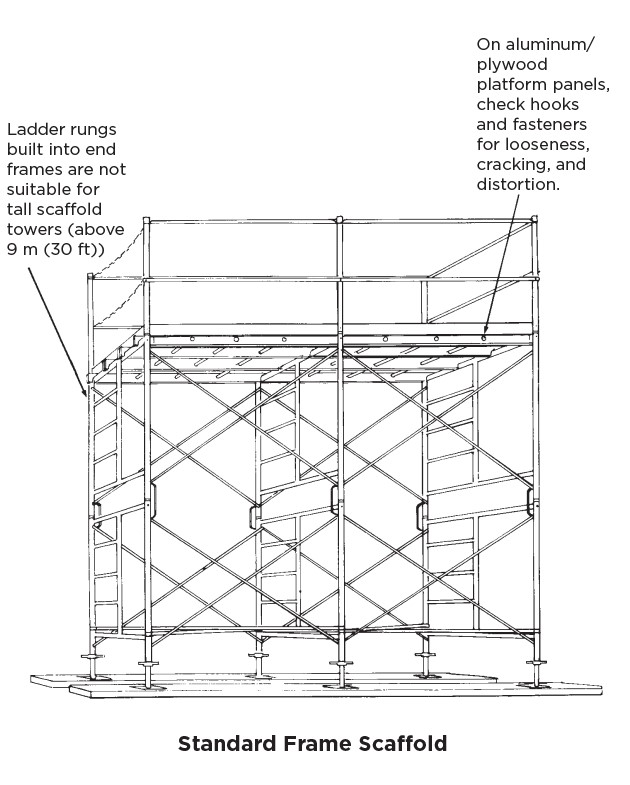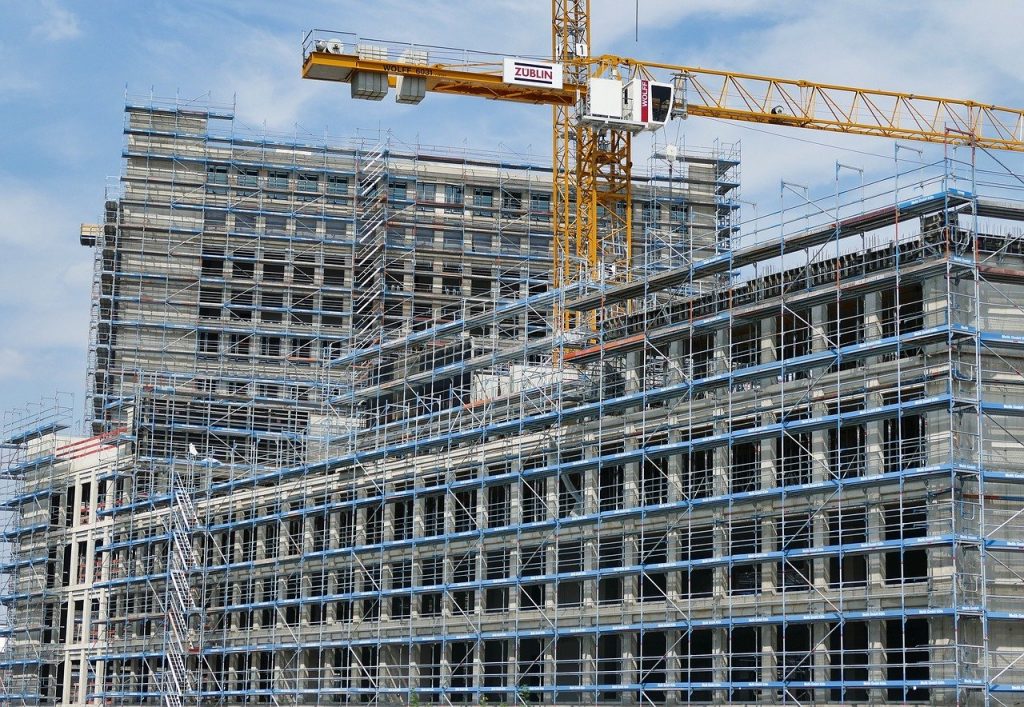Working at Heights – Scaffolds – Structural Components
Scaffolds—Structural components
Explain dangers
If the structural components of a scaffold are damaged, defective, or installed incorrectly, it can lead to a tip-over or collapse.
Identify controls
Structural components of all frame scaffolds must be inspected regularly. Inspection should include frames, feet, connecting pins, braces, and guardrails.
FRAMES
• Uprights and cross-members should not be cracked, rusty, bent, or otherwise deformed.
• All connecting components should fit together square and true.
FEET
• Adjustable base plates should work properly.
• Plates should be securely attached to legs to resist uplift as well as compression.
• If mudsills are used, base plates must be nailed to them.
CONNECTING PINS
• Frames must be joined together vertically by connecting pins compatible with the frames.
• Connecting pins must be locked in place to prevent them from loosening and coming out.
• Pins must be free of bends and distortion. If they don’t fit, get replacements that do.
BRACES
• Cross and horizontal braces should not be cracked, rusty, bent, or otherwise deformed.
• Braces should be compatible with frames and free of distortion.
• Horizontal braces must be installed every third frame vertically and in each bay laterally.
• Scaffolds higher than three frames must be tied into the structure.
GUARDRAILS
• The work platform must have guardrails.
• Guardrails must be compatible with frames.
• Guardrails can be made of tube-and-clamp components if they’re assembled properly.
Demonstrate
As you talk, use a scaffold to demonstrate to your crew what to look for during an inspection.

For more information, visit the IHSA website.

